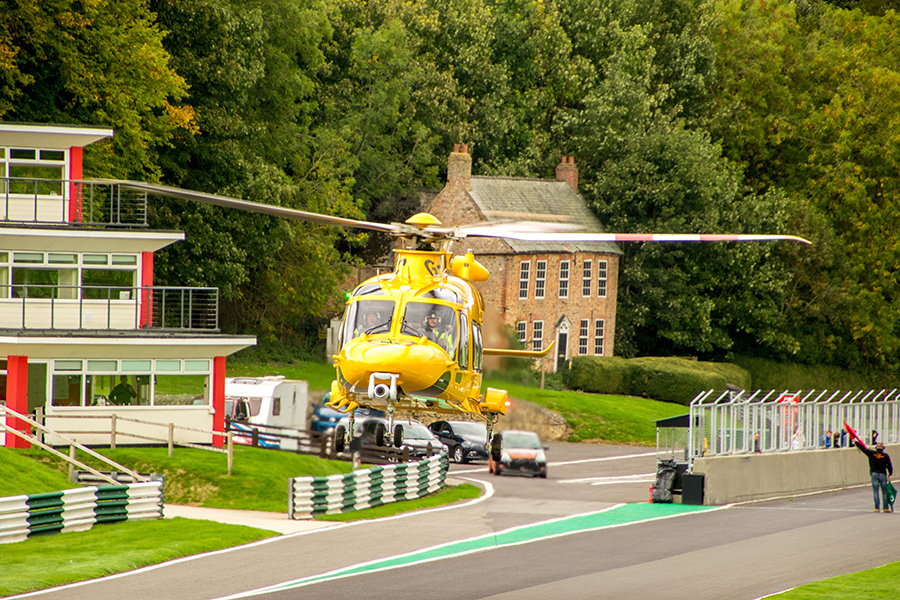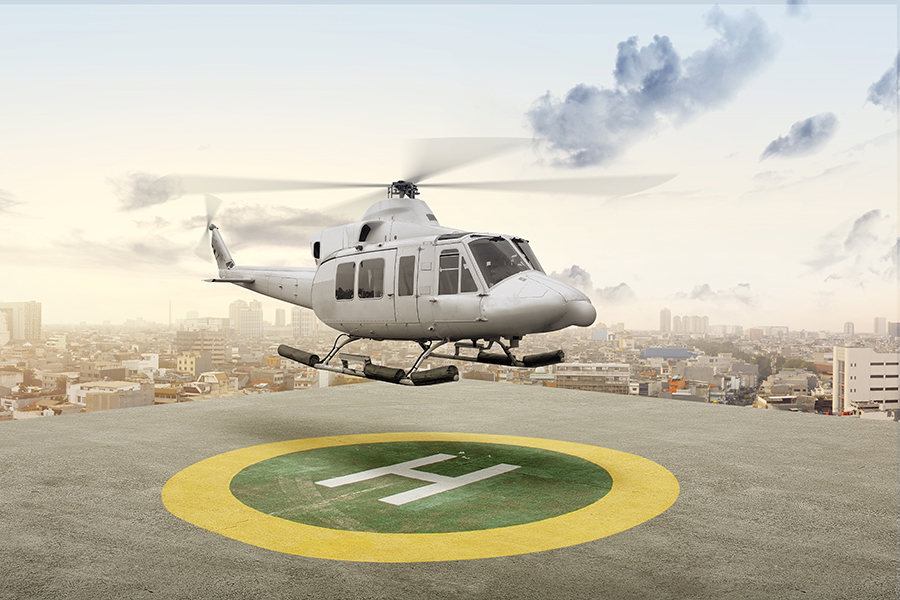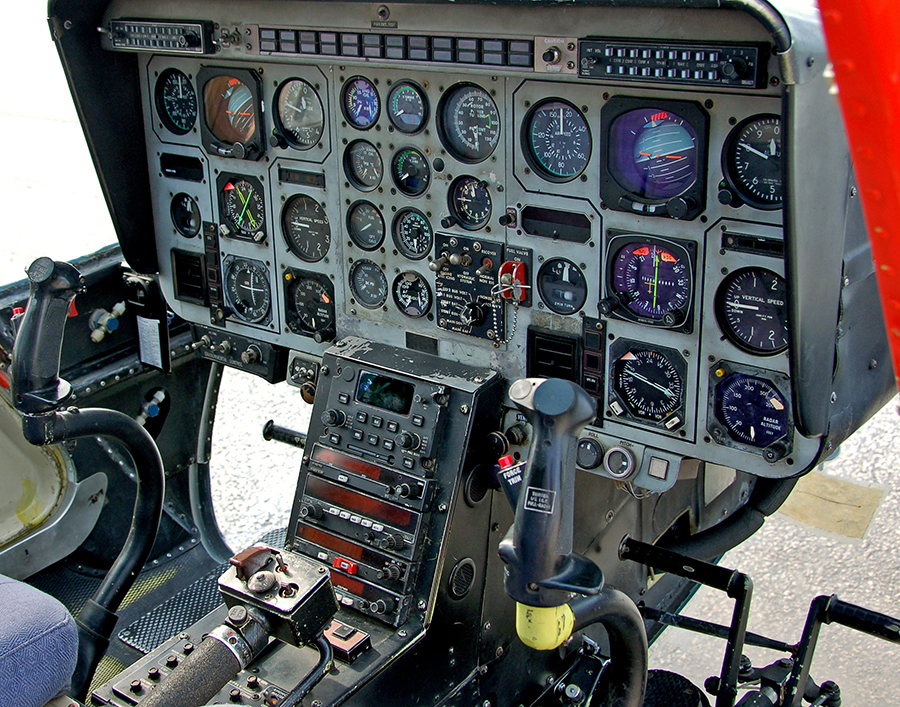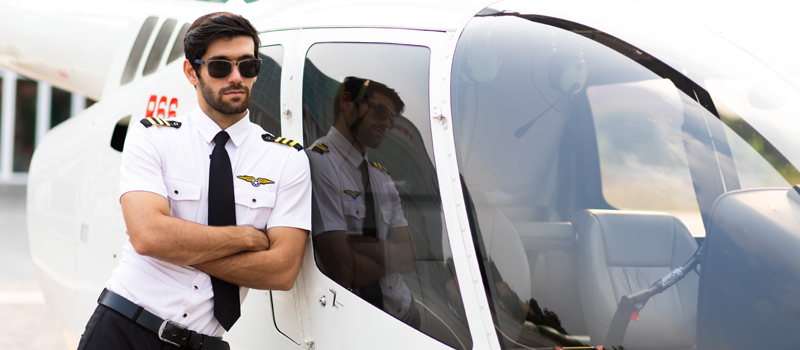Helicopters can land almost anywhere. At least, that is the commonly-held belief. Most people who are not familiar with rotary flying think that you can simply lift your helicopter into a hover, take off vertically, and fly. Then, when you arrive at your destination, you come straight down and plonk the machine onto any old bit of ground.
However, it is not true that helicopters can land anywhere. In fact, it is very difficult to land one in a small space, generally known in the helicopter world as a ‘Confined Area’. In reality, confined area operations are quite difficult and can be dangerous, for there are a great many things that can go wrong. For this reason, the confined area exercise is one of the very last lessons in the PPL(H) syllabus and is not even attempted until the student is reasonably competent at helicopter handling.
Even after getting your license, landing in a small space is something every pilot needs to attempt very cautiously. At the school where I trained for my PPL(H) and from which I used to hire helicopters afterward, low-hours pilots were not allowed to do any type of off-airfield landing unless an instructor had seen the site and okayed it in advance. This was to prevent enthusiastic and over-confident new pilots from coming unstuck when trying to land in a confined area – as can easily happen.
What Is A Confined Area?
So what exactly is a confined area and what are the potential problems of trying to land in one? I’ve never seen an exact definition, but basically, it is any space in which the flight of the helicopter is limited by obstacles. These obstacles vary, and may be any of the following:
- Terrain, such as a landing site among hills, where the layout of the ground makes landing difficult
- Trees or bushes close to the landing site, either on the approach or all over and obscuring the ground.
- Houses or other buildings could be on the approach.
- Electrical pylons and wires. These are almost impossible to see from the air, and flying into wires is a major cause of helicopter accidents.
Of course, there are other possible obstacles too. A confined area may be quite large, but be difficult to land in because of its shape, or the position of the obstacles, the wind direction, or all of the above. This means that every single confined area is different and must be assessed and approached in a different manner. We will look at that now.
Difficulties Of Landing In A Confined Area
So what are the possible difficulties when trying to land in a confined area? The first one, of course, is that you might fly into something or try to land on an unsuitable surface. This may sound unlikely, but obstacles are very difficult to see from the air. Steeply sloping ground can look flat, and fields sown with crops can appear like meadows. As mentioned previously, wires represent a major hazard. I was taught that the first thing you must do before a confined area approach is to ascertain exactly where the wires are – since there are highly likely to be some, somewhere! It was good advice.
The next potential problem is that of frequently needing to take off and land vertically or nearly so. Helicopters can do this, but it isn’t particularly easy, and it isn’t recommended unless absolutely necessary. In the admittedly unlikely event of an engine failure, it would be very difficult to land safely. Also, such landings require great care, as there is a very definite likelihood of getting into a ‘vortex ring state. Without going into too much technical detail, this is a dangerous condition in which the helicopter can quickly get out of control and crash. So landing vertically is only done when it is absolutely the only way.
Next, you need to be very careful about power requirements, particularly in the Robinson R22 or similar small piston helicopters that many low-hours pilots fly. You may have enough power available to land vertically in the area – but will you be able to get out again, particularly if the weather becomes warmer?
Let us now take a look at what you will learn during the actual confined areas lesson, and what you need to do to land in a confined area safely and then take off again.
Confined Area Landings
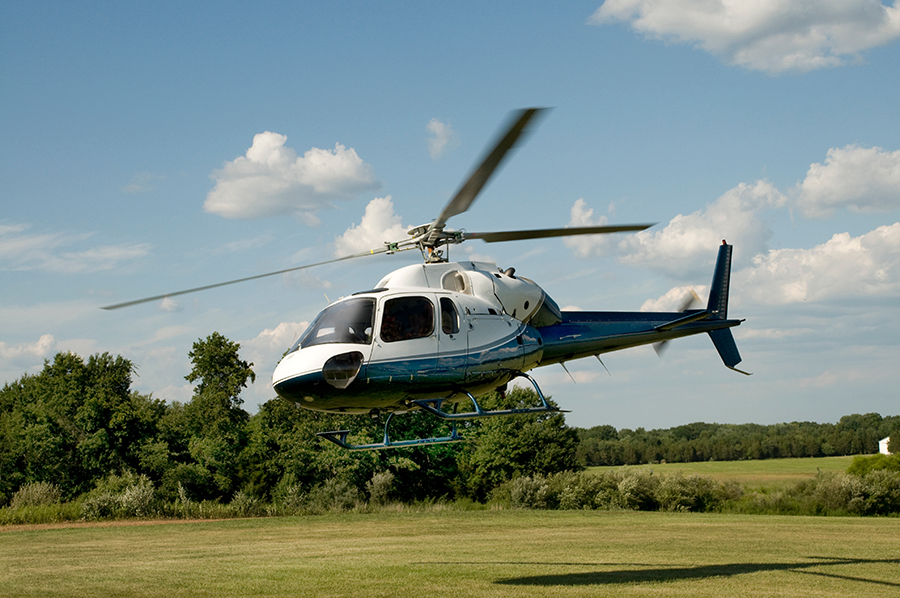
The first thing you need to do before landing in a confined area is a reconnaissance, or ‘recce’. This means you fly around the site, checking that it is suitable for landing. You consider what is often called the ‘5 Ss’ – size, shape, surface, slope, and surrounds. You need to add another S in rural areas, for ‘sheep’, and yet another one in winter, for ‘sun’, as a low sun on the approach could really cause you problems.
The next thing you do before landing in a confined area is plan a low circuit, sometimes called a low recce, and fly it. This should include a dummy approach and a go-around so that a close look at the actual landing site is obtained. Some people say to fly this circuit at 500 feet above the highest obstacles; others recommend lower than this. It is best to do as your instructor tells you at this stage. Recommended speeds vary too, but generally, it is best to fly the circuit at 60 knots, slowing to around 40 knots on the base leg. The aim of this dummy approach is to find out if there are any problems you hadn’t been able to ascertain from the air, such as hidden wires, holes in the ground, wind shear, etc.
Having done all of the above, only then, will you fly a circuit and land in the clearing or other confined area. There are three main approach variations you can use in order to do this. Let’s look at each of those in turn.
1. Constant Angle Approach
In this approach, you follow the same approach angle all the way to the ground. It is similar to a normal approach that you would make when landing anywhere else. You always use this approach if at all possible, as it is the easiest and safest.
2. Double Angle Approach
This approach is used when a constant angle approach would be unacceptably steep. In this case, a shallow approach is flown, then a steeper approach to the aiming point is used. This steeper approach must be done very carefully, as there are many problems associated with steep approaches in helicopters, as explained above..
3. Vertical Approach
This approach is used when trying to land in small restricted areas. It involves letting down vertically and must be done with extreme care, so as not to get into a vortex ring state and lose control of the helicopter, as explained above.
In all cases, the approach is made to a high hover. You then do clearing turns about the tail before landing. This involves putting the fragile helicopter tail in the center of an imaginary circle and turning around it, in order to check if there are any obstacles that could damage the tail.
Landing is done cautiously, using the sloping ground technique if there is any doubt at all about the state of the surface.
Confined Area Take-Offs
It is not only confined area landings that are difficult. Taking off from a confined area must also be done with great care.
Before attempting to leave the area, you need to check the power available, since you will need to do either a ‘towering take-off’ or a ‘vertical take-off’. These are slightly difficult, but both require an almost vertical climb, and this uses a great deal of power. You need to make sure that amount of power is available, and if there is any doubt at all, it is permissible to do a trial vertical climb to see if you have the power to avoid obstacles.
You then need to decide on a safe way to leave the area. It is good to take off into wind if possible, but if this involves climbing over obstacles or wires, it may be safer to leave crosswind or even downwind.
Next, you come to a low hover and climb vertically until you can clear any trees or buildings ahead. For a towering take-off, you climb above them when you can do so at the best angle of climb speed, while for a vertical take-off you ascend vertically until above all obstacles, then move the cyclic forward to leave the area. The latter of course uses a great deal more power.
My Personal Experiences Of Confined Area Operations
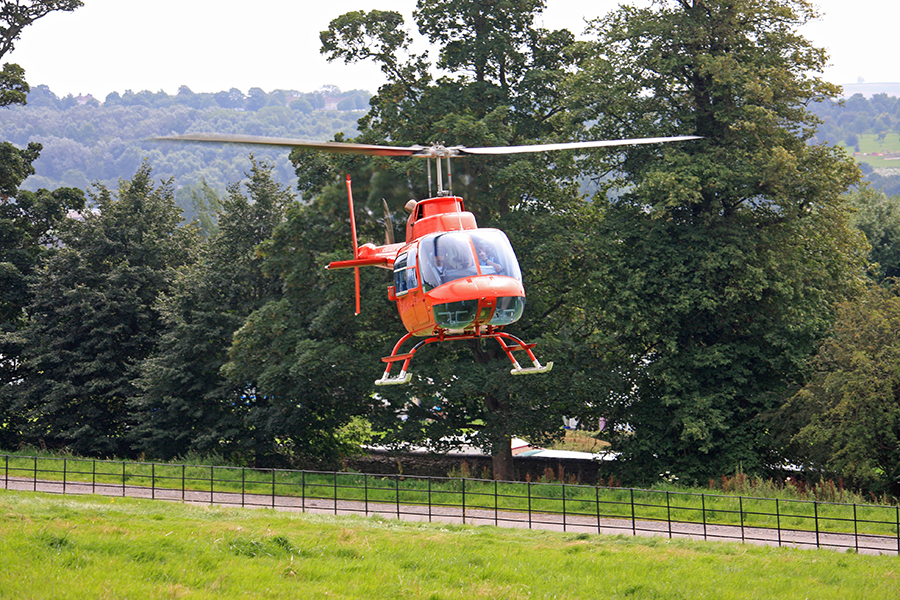
Does this all sound difficult? I hope so because, in a tightly confined area, it is. Because of this, many private pilots rarely do confined area maneuvers after getting the PPL(H). Indeed, if you hire helicopters from flying schools or clubs, some of these don’t even allow it. So people fly to other airfields or perhaps land on large, flat areas which aren’t really much of a challenge. This is a totally sensible thing to do; ‘make haste slowly’ is always a good maxim in aviation. But it doesn’t give new pilots much opportunity to extend their flying and learn how to do more. Also, I suspect that many of us hanker after trying some ‘real’ helicopter flying, involving maneuvers like getting into really tight spaces. After all, that was why we wanted to fly helicopters in the first place, wasn’t it? If we’d wanted to fly between airports, we could have gone fixed-wing and saved a lot of money.
I certainly felt that way, and I really wanted to do some helicopter flying involving confined area operations. And, fairly soon after getting my PPL(H), I was lucky enough to be able to have a go at this type of more challenging flying. I had the chance to try some helicopter flying in Russia with ex-military pilot instructors. And on the last day of my 10-day trip, I learned how to land in a really tight confined area.
My instructor that day was Sasha, an ex-war hero who had been shot down in Afghanistan and also once ditched over the Black Sea, or so I heard. He directed me to a tiny little clearing in the middle of a huge forest, telling me to land there. It looked difficult, if not impossible. The only way in was to fly overhead, then let down absolutely vertically from around 600 feet. I had never done anything like that before, but I tried. However, I couldn’t see where to land, as the instrument panel of the large MI-2 helicopter got in the way. Sasha showed me how to come down vertically, keeping my aiming point diagonally off to the side, and looking out to my left so that I could see where I was planning to land. It was difficult, and there seemed to be no room at all for error; in fact, there appeared to be hardly room for the helicopter at all. I struggled with it for what seemed like ages. Finally, trembling slightly from the intense concentration, I managed to come to a hover over what now turned out to be sloping ground. But my tired feet forgot about the required bootful of the right pedal. The MI-2, like most Russian helicopters, has clockwise rotating rotors, which means the right pedal is used when increasing power. I had become accustomed to the change over the preceding few days, but apparently not all that accustomed.
“Right pedal, right pedal, RIGHT PEDAL,” yelled Sasha, as I struggled to straighten the helicopter. Then, obviously thinking that I needed a clearer demonstration of what ‘right pedal’ meant, he took control, put in the full right pedal, and took us in a spiral vertical climb up to 600 feet, where he immediately handed over to me to try again. I was stunned. I would have sworn there wasn’t room to turn the helicopter round in that space – but we still had a tail rotor, so there must have been. I was also really, really tired, and now I had to do it all again. I thought of saying that I’d had enough and that it was too much for me, but I just couldn’t bring myself to refuse to do the sort of helicopter flying I’d secretly always wanted to try.
Sasha, meanwhile, looked totally unconcerned. He was chain-smoking, hands and feet nowhere near the controls, as I wobbled dangerously near the trees on my second attempt. He opened the door to flick out the ash, and the door whipped out of his hand in the strong wind. He grabbed at it half-heartedly and missed, so he left it swinging in the wind. I wondered if this was the reason for my difficulty in descending vertically and hovering accurately. But it could have just been intense fatigue by now, for this gung-ho stuff felt like it was really a bit beyond my limits at that time. Anyway, I thought, at least there was a gap ahead of the clearing when we came to leave…and then I saw the power lines! There was no way in or out of this area except vertically.
Finally, I managed to land on the designated spot. Sasha grabbed my cyclic hand and then roared with laughter; I was pouring with sweat. “Helen, relax,” he said good-humouredly. And after making me manage the vertical take-off to clear the power lines, he directed me to a field for some of the very precise hovering practice which I so obviously needed. By the end of the hour – and it felt like much longer – I was exhausted, but elated. Overall, it was one of the best helicopter training sessions I can ever remember.
That hour with Sasha also taught me something far more important: that this sort of helicopter flying is best done with an instructor, or left to the experts. I had certainly enjoyed it, but it was definitely at the limit of my capabilities at the time, and it was not something that it would have been safe for me to do alone.
Conclusion
So if you want to land in a confined area after you get your PPL(H), do so, but take care. If at all possible, have a look at the site from the ground first. If it looks too challenging for you, never be afraid to refuse to land there. I have several times told people that the site where they wanted me to take them simply wasn’t suitable. They’ve sometimes been annoyed, but passengers don’t know about helicopter flying and therefore don’t appreciate the dangers. It is always your decision, so don’t be afraid of making an unpopular one.
On the other hand, if you manage to get the opportunity to extend your abilities by doing the type of flying which I did in Russia, do take advantage of it. I promise you that you won’t regret it, and it will make you a better and safer helicopter pilot.
